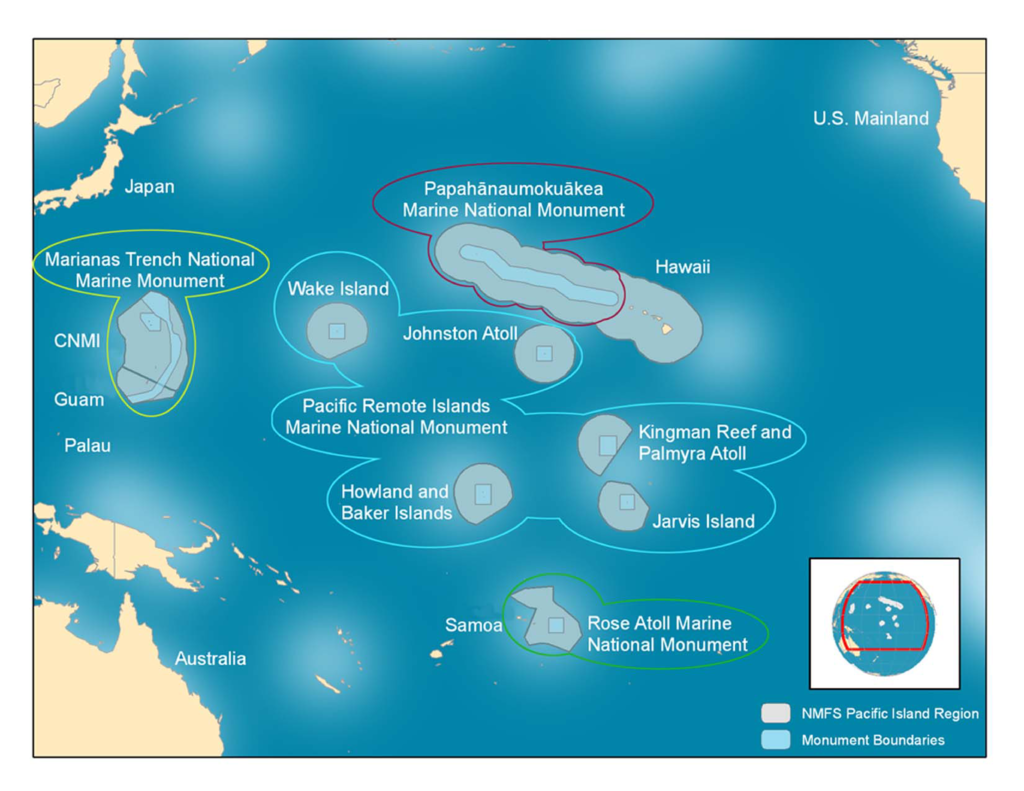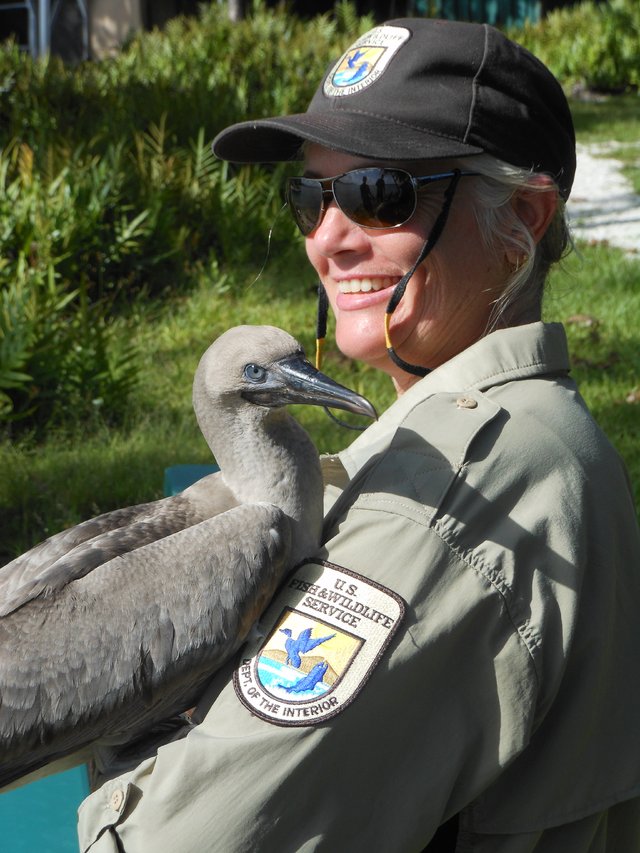The Pew Charitable Trusts applauded President Barack Obama’s decision today [September 25] to expand the Pacific Remote Islands Marine National Monument, a group of five highly protected reserves that is home to some of the nation’s most important ocean wilderness (source: Pew Press Release, titled “Obama Administration Expands Protection of U.S. Ocean Treasure: Decision significantly advances global ocean conservation”):
The president extended the boundaries around three of the monument’s five marine reserves—Johnston Atoll, Wake Atoll, and Jarvis Island—from the area 50 miles from shore, designated by President George W. Bush in 2009, to 200 miles from shore. Taken together, the expanded protections for the waters around these atolls and islands—which are not contiguous—provide approximately an additional 408,000 square miles (approximately 1,050,000 square kilometers) to the monument. This action is the latest in a global movement to create large, highly protected marine reserves to counter the dramatic declines in ocean health caused by overfishing, pollution, and development, as well as the emerging challenges associated with climate change.
“This marks an important day for ocean conservation in this country,” said Matt Rand, who leads Pew’s Global Ocean Legacy project, which advocates for establishment of the world’s great marine parks. “The expansion of these marine reserves will greatly enhance the footprint of protection already there and with it, support a vast array of sea life that inhabits one of the most pristine ocean systems remaining on Earth.”
With this announcement, the amount of U.S. ocean territory highly protected has more than doubled, from about 6 percent to 15 percent. The expanded Johnston Atoll, Wake Atoll, and Jarvis Island marine reserves rank third, fourth, and sixth in size, respectively, among the world’s highly protected marine reserves. Research shows that highly protected marine reserves are essential to rebuilding the abundance and diversity of ocean species and increasing the resilience of habitats and ecosystems to climate change. Healthy oceans also have a greater ability to sequester carbon dioxide and generate oxygen.
“Today’s action by the president protects some of the world’s most important ocean habitats and provides sanctuary for rare and endangered sharks, seabirds, turtles, and marine mammals,” said Rand. “We hope the steps taken today by the U.S. government will accelerate similar actions by a growing list of coastal nations to protect more of the world’s great ocean treasures.”
Spread over a swath of ocean thousands of miles southwest of the Hawaiian Islands, the island and atoll areas that make up the Pacific Remote Islands Marine National Monument are distant, uninhabited, and teeming with wildlife. A unique ocean environment, these waters are home to hundreds of seamounts, or undersea mountains, as well as spectacular coral ecosystems that provide vital breeding, nursery, and feeding grounds for whales, sea turtles, fish, and millions of seabirds.
President Obama announced on June 17, 2014, that he planned to expand protections for the monument President Bush had designated five years earlier under the Antiquities Act. The U.S. government’s public consultation this summer saw strong public support for expanding and fully protecting these waters. More than 135,000 U.S. citizens, including Hawaiian residents, business owners, and nonprofit organization representatives, sent messages supporting the plan. Many Hawaiian and Pacific leaders also voiced strong support.
Over the past decade, the Global Ocean Legacy project has worked around the world with governments, scientists, fishermen, and residents to create the first generation of great marine parks. Those efforts have resulted in the protection of nearly 1.4 million square miles (nearly 3.6 million square kilometers) of ocean. In recent years, historic marine conservation decisions have been made by the United States in designating the Papahānaumokuākea Marine National Monument in the Northwestern Hawaiian Islands in 2006, by the United Kingdom in establishing the Chagos Marine Reserve—the world’s largest—in the Indian Ocean in 2010, and by Australia in designating the Coral Sea Marine Park in 2012.

.jpg)


